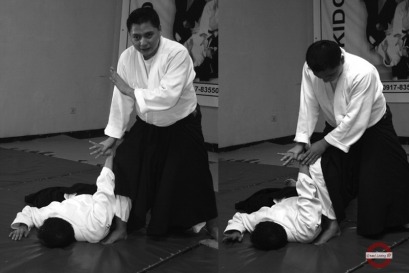 Sensei Winston demonstrates how to lock properly A familiar sight caught my eye as I was going around the baranggay center. There pasted on the wall of their function room was a large sign that spelled AIKIDO, The Way of Harmony. An aikido dojo here in BF! Why have I not seen this before in my three years in BF? I took down all of the pertinent data and promised to come back.
When I walked in on a Monday afternoon just after 5:30 p.m. for the start of their warm-ups, a flood of memories swept me almost 15 years back to the time I first enrolled in a Makati dojo. I knew I wanted to take up martial arts but didn't exactly know which one. I knew what I did not like--judo and tae kwon do. I finally settled on Aikido.
Because we used the harder puzzle-mats instead of the softer foam-lined rubber mats normally found in many dojos, it felt like we practicing on soft ground. That and the constant parrying movements resulted in my waking up a month later and finding big bruises on my arms and legs. Somehow that brought home to me the martial aspect of this budo or martial arts. But aikido as a martial art has undergone a series of transformations almost right from its inception because of a perceived "lack of realism in training," and therefore it is seen by many to be inapplicable in real combat.
Students of the founder, Morihei Ueshiba, also known as Osensei or Great Teacher, diverged from his techniques and styles and created their own schools even while he was still alive.
Today, the schools and styles range from the soft to the hard forms, with some even incorporating competitions, contrary to the spirit of the founder. Deriving mainly from the martial art, Daitoryu Aiki-jujutsu, Ueshiba branched out and "envisioned aikido not only as the synthesis of his martial training, but also an expression of his personal philosophy of universal peace and reconciliation."
Its teaching centers on defending yourself while harmonizing with your attacker resulting in as little injury to both as possible. Initially, it seems alien to the popular concept of martial arts where disabling an opponent almost always means delivering a fatal blow. But go deeper into budo philosophy and you will see that your worst enemy is your own ego.
Becoming a passionate aikidoka made me fall in love with many things Japanese. When I continued practicing aikido after temporarily moving in with my parents in Davao City, I created a Japanese-inspired bedroom for myself and bought books on the subject.
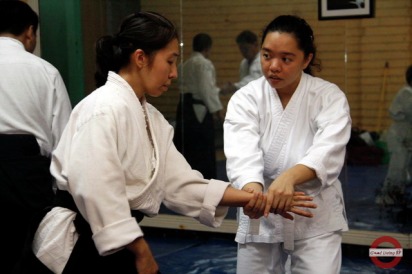 Shodan Tess Torres assisting Berna as she practices for her exam Two of them were It's a Lot Like Dancing: An Aikido Journal by Ueshiba's student, Terry Dobson and Angry White Pyjamas, by Robert Twigger, who chronicled his one-year intensive training in Japan.
I had to laugh when I saw the title of Dobson's book--he said it like it is--Aikido is a lot like dancing, the very description that came to my mind while watching my own sensei twirl around mesmerizingly in a constantly moving circular fashion--it was so aesthetically pleasing and so deadly at the same time.
The nage (thrower) and the uke (receiver) have to harmonize their moves to blend together like a pair of experience dancers in order to effectively execute a technique.
The nage has to adapt and adjust to his or her uke to unbalance and render the uke vulnerable while allowing the uke to exit unharmed by doing an ukemi or a breakfall. While the uke must attack honestly in order to allow his or her nage to apply the technique correctly. It's a play on balance that focuses on the role of your hara, or lower belly, said to be the center of your gravity or the center of your balance. A person of gravitas is said to be one who contains a certain dignity and substance. My sensei could not emphasize enough the importance of doing things from your hara, whether physically or spiritually.
How apt then to come across a dojo called the Hara Aikido Dojo. Established in the mid-90s, its longevity is good sign of its success. Sensei Winston Guasch is a 4th dan master who has studied under various Japanese senseis from the Hombu Dojo.
He can switch back and forth between easy camaraderie with his students to sensei-mode in a flash, at home both as a friend and a teacher. And his students respond accordingly. Tess Torres, the dojo's secretary, entertained me the second time I visited the dojo. Showing that it's never too late to take up martial arts, she signed up five years ago as a 39-year-old veteran of gyms and yoga.
"I needed another exercise that made me think. I wanted an exercise that challenged my mental and physical abilities. When I enrolled, I checked out another one just to compare, but of course I live near here so this was really my target dojo."
Not satisfied with what she saw in the other dojo, she happily settled here and has thrived ever since, reaching shodan (1st dan) level two years ago. Her young son, Enzo, now practices with her; her daughter plans to join them next year.
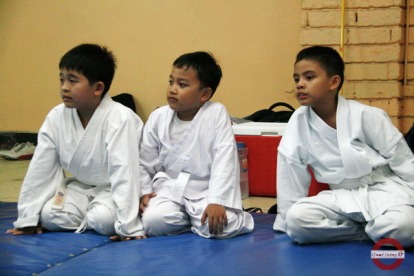 Enzo (left) with other students of his age I immediately noticed the wide range of age groups of the students, from grade schoolers to middle-age enthusiasts. Apart from Tess and her son, there is also a father and son, brothers, and sisters. Tess wants to encourage parents and children to practice together.
The class is almost evenly divided between the genders, says Tess, both ranging in ages as well. I was privileged to be present for the exam of one of them. "When I came here there were two women so it boosted my confidence--they seemed to be ok, they don't seem hurt," she laughs.
Speaking of her sensei, Tess relates that "he makes sure that for beginners, there's a one-on-one with you and him until you learn your correct uke. And then he joins you in the techniques. That's how he teaches you." Reflecting on the relative unpopularity of aikido, Tess echoes the glaring difference of aikido from other martial arts. "Our culture embraces more of the competitive martial arts. Even in school. If you notice, there's no aikido in schools because schools like competition and competing with other schools like in basketball or volleyball. When there's no competition, generally it's not well funded. Not a lot of people are interested. It's like, for what? There has to be some goal. But the goal here is really for refinement."
But she has no quarrel with MMA, shrugging that if that's what people want, you have to respect them. For her, she has found her niche and sees herself practicing till she's 70.
"It's not about taking down somebody. The self-defense part comes more as a reaction, the evasion. When you're walking down the street, it's more about awareness and reaction (evasion). It's not about doing incredible technique." 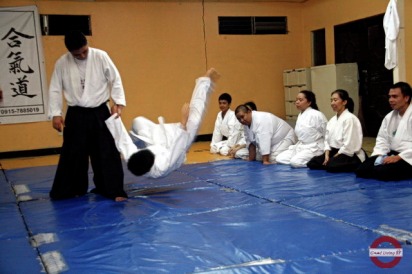 Practicing the ukemi "When you're attacked on the street, the first thing you can do is do an atemi (a strike or a feint) on your attacker and if he's disabled, the next thing you should do is to run!. Preservation of life first. Walk with confidence."
"But in a knife attack, practically speaking, the chances of escaping unscathed are probably none. The goal is for you not to get stabbed fatally, but expect a 50% chance of taking a cut. And as much as possible, just disable and not kill," Tess concludes.
My sensei used to tell this story. An attractive woman was walking down an alley when her way is menacingly blocked by group of young men. She confidently walks up to the leader, gives him a big smile, and asks in her most charming voice, "What time is it?" The young man automatically looks down at his watch as if in a trance. Smiling again, she walks past them.
That, my sensei, said is the aikido spirit as embodied in an atemi that unbalanced a would-be opponent without throwing a punch. Osensei would have been proud.
What is it with animals that arouse a primal fear in humans? Maybe we can trace it back to our evolutionary history and survival.
Psychologists Vanessa LoBue and Judy DeLoache conducted a study that showed adults and children are adept at detecting the presence of snakes and spiders whether they fear them or not, not out of an innate fear of these creatures but maybe from "experience or learned bias."
However another research showed that it is not so much an evolutionary response as it is a natural fear by the inexperienced. Indeed, my close encounter and observations at the Kinder Zoo seem to support this conclusion.
Last Saturday, The Pergola invited the Kinder Zoo of the Manila Zoo to showcase some of its animals at the mall. The Zoo brought over Julia, the meter-long, full-sized adult caiman whose jaws were taped shut; Snikee, a very active 7-foot Burmese python; Pig-Ibig, the sleepy Vietnamese potbelly pig; Mols, the dancing Moluccan cockatoo, who feasted on sunflower seeds and grapes; and Boji, the Sulcata tortoise, who moved relatively fast for his size.
This was only the second stop of the roving Kinder Zoo after a three-month stay at the SM North and the enthusiastic response overwhelmed the organizers.
It helped that we got lucky with the weather. Coming at the start of the rainy season, the Man upstairs must have a special love for children and animals because He made sure we had a sunny afternoon to make this event a rousing success.
As soon as the animals were let out of their cages, there was not a moment's rest as they attracted wave after wave of parents and children who were by turns curious, shy, tentative, terrified, amazed, , delighted, exhilarated, and entertained.
Given the chance to mingle with the animals, they began to relax and interact with them. But not all children did; there were one or two who adamantly refused to let their natural wonder overcome their fear.
It did not seem to border on agrizoophobia, the fear of wild animals; it may have been more of a fear of the unknown for these children. It may surprise them that many wild animals have a natural fear humans borne out of the fear of predation.
But just as exposure to animals can make people lose their fear of them, so do animals lose their fear of humans after constant exposure to the human world. However, this leads to dependency and ultimately conflict. So fear on both sides serve to protect us both from upsetting the balance of Nature. I had my own chance to face my own fear of the snake at the Crocodile Farm in Davao City. Dars challenged me to pose with a Burmese python--whose circumference was probably as big as my thigh--and have it wrap around my neck as was the case with everyone else. Oooookay. Piece of cake--except for that instance when I felt its powerful muscles moving as I held its length in my arms and my heart just stopped momentarily. Let's just say that's why I prefer to be behind the camera. When I was a child, I had nightmares about being eaten by a tiger. It was not so much the thought of dying that terrorized me--I had thought that that would be the end of my soul too, and then I would cease to exist forever. Isn't that how the native Indians of America also felt towards the camera? It may well have resembled an animal in their minds, ready to devour their souls if their pictures were taken. Fascinating objects of wonder these are, animals and cameras alike. See Picture Gallery here.
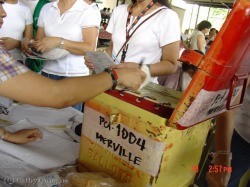
Manual voting seems so ancient. This picture was taken back in 2004.
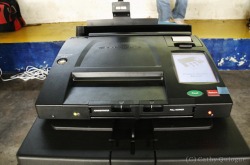
With the success of our first automated polls, there's no going back to manual voting.
I was one of the Parish Pastoral Council for Responsible Voting Volunteers for this election and was assigned as a Roving Photographer for our 76 precincts grouped under 13 clusters. Here are my notes about election day.
1. It was generally peaceful. At least in Phase 3. Yes, it may not have been as orderly as people wanted it to be--people shouted; tempers flared; and maybe there were near-riots--but there was honest effort on the part of the teachers and the PPCRV volunteers to give everyone their due. I was also in awe of the voters who patiently stood under the unforgiving sun and waited for their turn to vote. I salute everyone.
2. Can a cleaner election season be far behind? For now, we seem to have dealt dagdag-bawas a fatal blow with our first automated counting. If we managed to somewhat clean our electoral system, I hope it won't be far in the future when we can also do away with 90% of our election posters and hold a more environmentally friendly election season.
3. It could have been better. It was our first time for automated polls so the chaos was expected. Nevertheless, crowd control could have been better. Planning could have been better. Information dissemination could have been better. But the Comelec never tested the system in a mock election scenario so even they had to admit that their clustering system, which greatly contributed to the huge crowds, is something they have to rethink in the future. 4. We needed more volunteers. The PPCRV had its hands full handling pre-election preparations and providing election day assistance to the Comelec. On hindsight, more planning for crowd control could have been done but the organization did what it could, thanks to a lot of help from its dedicated volunteers and our parish church, which lent its site and facilities to the PPCRV pre-election seminars and meetings.
5. It was a miracle no one fainted in the oppressive, rubber-melting, strength-sapping, sanity-endangering and mind-numbing heat. I couldn't sleep the night before. I thought it was hotter than usual. Election day proved no better. I had to get up at 5:15 a.m. to be at the site by 6 a.m. By 10:30 a.m., I was too enervated to continue so I went home to take a short rest and change to sandals. My neck was chafing from lugging a camera for hours on end, which wasn't exactly a sane thing to do that day. They say only mad dogs and Englishmen go out in the midday sun. Well, only askal dogs and patriotic Pinoys stay out in the midday sun and tough it out. 6. Senior citizens rock. There was the smiling 85-year-old Mrs. Bella Cotoner who came with her daughter followed by her 90-year-old husband, Mr. Venusto Cotoner, who walked with his grandson. With canes in hand and hope on their faces, they managed to walk into our historic first automated polls. Wheelchair-bound men and women were not an uncommon sight either. At the other end of the generation scale was first-time voter, 19-year-old Larissa Lim, who voted after the Cotoners. It may have been that the senior citizens caught my attention more but they seem to have outnumbered the youth that day.
7. Democracy is worth all this. We had our first automated vote even though the automated part was really limited to just automated counting but who cared? Something was automated at last. We leaped from 3rd-world 20th-century backwardness and knocked on first-world 21st-century technology, even if only for the counting part. It's a small step up but a giant leap forward. So were the pre-election doomsayers justified? Let's just say given the track record of Gloria Macapagal-Arroyo, they had every right to keep everyone vigilant.
8. If I become president.... I would have the Comelec build voting centers all over the country, with complete amenities like waiting areas, bathrooms, food counters, voters assistance areas, etc. The centers could double as convention centers in the non-election years to generate funds. But it would also serve as a venue for continuing voters' eduction seminars as well as biometrics center, voters' lists cleansing center, etc. Voting should not stop after the polls close--it should be a continuous process of improving our technology, our systems, our mechanics, our voters, and not least of all, our candidates. I can dream, can't I?
9. And speaking of biometrics, if I were president (while I'm at it), I would implement the National ID system. Half the long lines and voting delay can be attributed to the time spent (or wasted) registering at the Comelec desk. The next part of automation should be for a reliable voters' identification system. The third part can perhaps be devoted to automated voting per se. 10. Teachers and volunteers should merit a day-off the day after elections. It was a 20-hour day for most of us, perhaps even longer for the teachers. At least some volunteers had shifts--the teachers worked straight. Their enviable stamina could put many athletes to shame. In the future, I hope voters pause and take note of their dedication, their nightmarish working hours, and their work ethic before they heap criticisms on them. When I went home at midnight, many of them were still inside the court.
11. I still haven't had the time to see if there was news about the 300,000 teachers in danger of disenfranchisement. Of all the duh scenarios about this election, perhaps this takes the cake. You mandate teachers to serve then you penalize them for voting elsewhere?! Sometimes, you wonder if working in the Comelec melts your brain.
12. Elections in the Philippines is hope and despair personified. It gives me hope to see how patriotic we can be; the look on some voters' faces while they were voting and after they had cast their votes was priceless. That said, it makes me despair to see the kind of people we elect. Erap Estrada in second place? On the other hand, you might ask, who made him eligible to run again? Intellectually-challenged and intellectually-endowed leaders seem to have little difference between them. Bong Revilla, Tito Sotto, and Lito Lapid in the Senate? Don't get me wrong--Vilma Santos, from what I've read of her, seems to have performed admirably in Batangas. But I can name more deserving candidates than those three men above.
13. Elections in the Philippines is a paradox. All candidates promise the sun and the moon (some may even promise the universe) but they cannot follow a simple rule and plea to follow the poster rule? In the same breath, we expect the sun and the moon (and maybe the universe, too) from our candidates and yet we also cannot follow the simple rule regarding election posters?
14. The surveys were, after all, accurate. Will they get a little more love and respect from the public after this?
15. And lastly, it's a new beginning. All eyes are on the president-elect. His late mother hardly had the normal 100-day honeymoon before the bickbats and coups started flying her way. We gave the outgoing president 9 years of our lives. She gave us 9 years of suffering and yet we tolerated her. Would that we give Noynoy Aquino the space and support he deserves and needs to restore our faith and trust in government. Gloria Macapagal-Arroyo has made sure that the next president will have a hard time--her final laugh is appointing Justice Corona, a known crony of hers as Chief Justice--so bear this in mind as Aquino negotiates his way through the landmines she has unconscionably laid down for her successor and pray for him. God bless the Philippines!
|

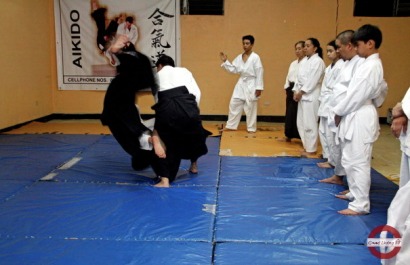
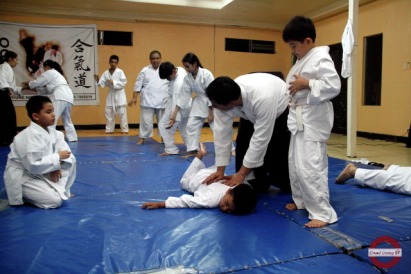

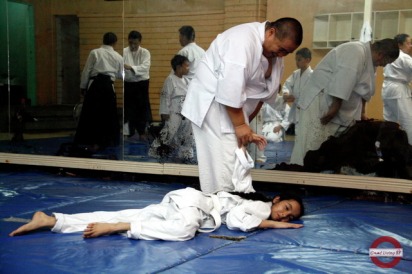


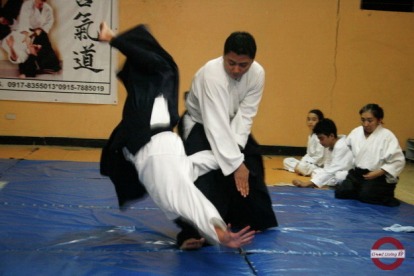

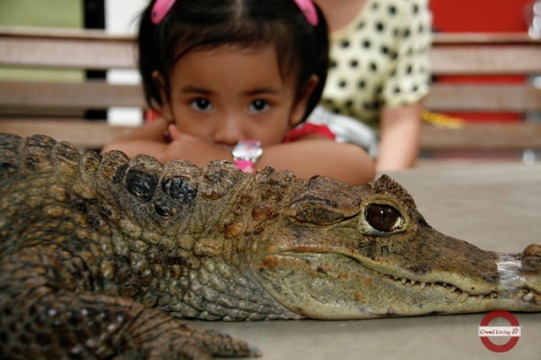
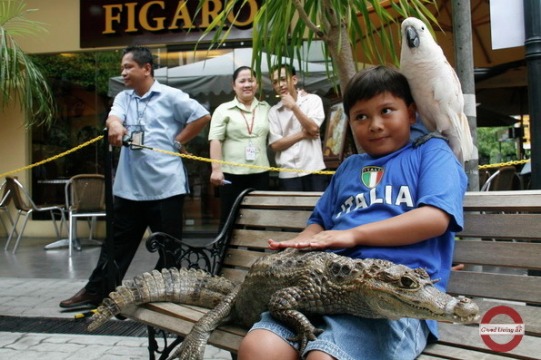
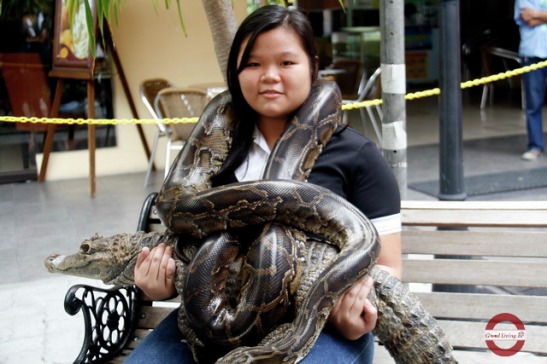



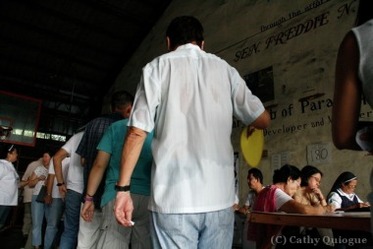
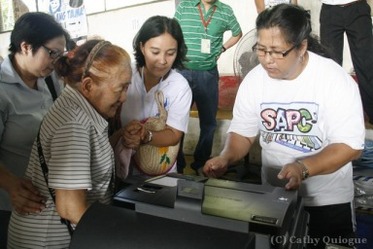
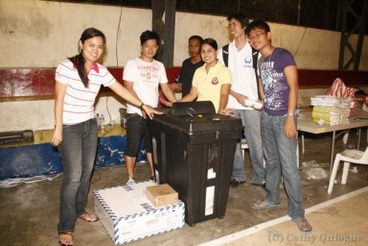

 RSS Feed
RSS Feed